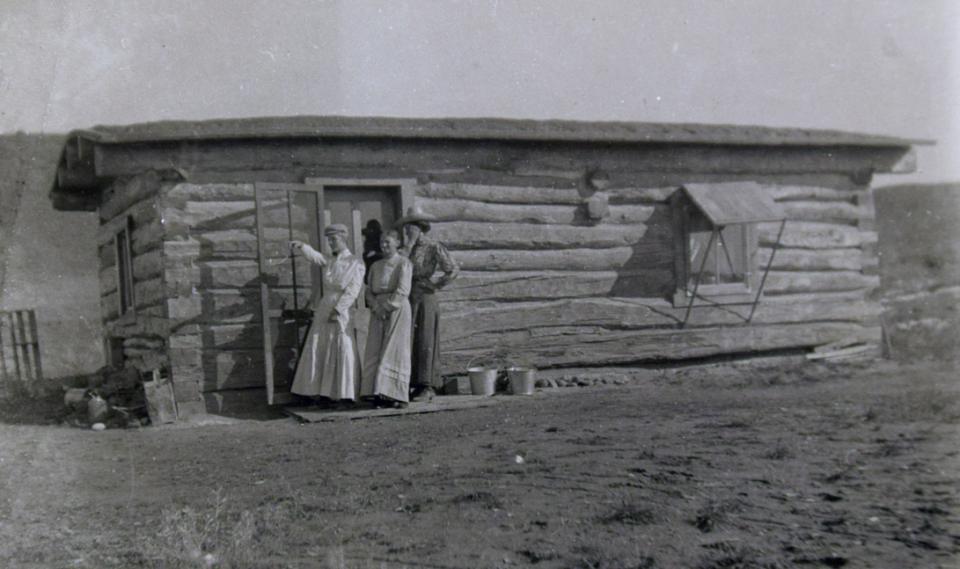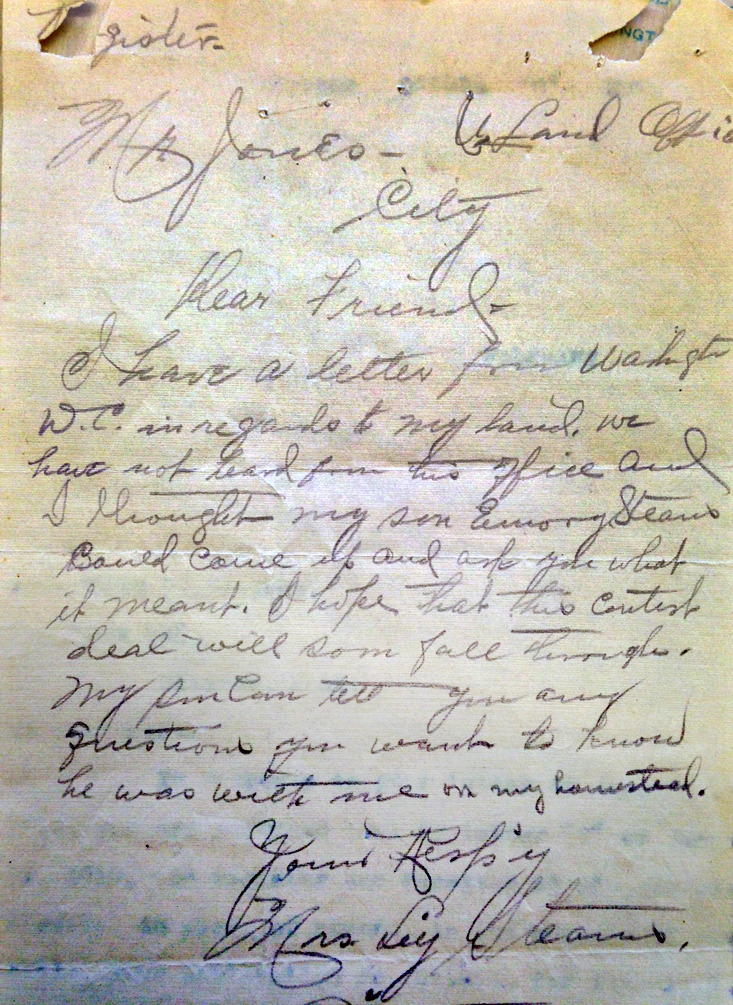Virtual exhibition reveals story of 'Lonely Homesteader' during western land rush

LAWRENCE — Lily Stearns was a nimble liar, a master manipulator and an all-around opportunist.
She was also a beautiful writer and an intrepid homesteader, according to Sara Gregg, associate professor of history and environmental studies at the University of Kansas.
 “Stearns tried her best to make a place for herself and her family, given some extremely adverse circumstances,” Gregg said. “I have been struck by how easy it was to piece together a full account of the type of human being she was, even though the records of her life are somewhat sparse.”
“Stearns tried her best to make a place for herself and her family, given some extremely adverse circumstances,” Gregg said. “I have been struck by how easy it was to piece together a full account of the type of human being she was, even though the records of her life are somewhat sparse.”
Gregg has created a virtual exhibition dedicated to this pioneering woman titled “American Land Rush: ‘A Lonely Homesteader’ Searches for Security in the Montana Homestead Boom.” This open-access exhibition is hosted by the Rachel Carson Center for Environment & Society in Munich, Germany, and it offers a microhistorical survey of Stearns’ homesteading days in northeastern Montana from 1912 to 1918.
 The exhibition explains how Stearns’ struggle to “sink roots in Montana contextualizes the larger economic, social and environmental challenges for those who envisioned taming the land — and themselves — in the face of larger climatic and geopolitical forces.”
The exhibition explains how Stearns’ struggle to “sink roots in Montana contextualizes the larger economic, social and environmental challenges for those who envisioned taming the land — and themselves — in the face of larger climatic and geopolitical forces.”
While it’s just one of millions of stories concerning individuals homesteading in the western United States, Gregg connected with how timeless this drama was, despite it taking place more than a century prior.
“You see firsthand how our contemporaries have complex lives. But all those dramas and complications were really evident in Lily’s life as well,” she said.
“‘Lily was orphaned at 8, jumped around from relative to relative until she got married at 23, left her first marriage because of physical abuse, left her second marriage because of verbal abuse and left her third marriage because of financial conflict. Throughout it all, she stuck it out, determined to make a place for herself in the world,” Gregg said.
Homesteading might seem rather hard to relate to for people who live in modern, metropolitan environments. Yet Stearns faced similar unfamiliarity with the challenges that confronted her.
“Many of those who homesteaded over time had actually come from urban areas,” said Gregg, who grew up primarily in Virginia. “They imagined finding new opportunities on a farm of their own. Many of the people who homesteaded had been farmers elsewhere, but many of them were bookkeepers, stenographers, doctors or patent medicine salesmen who moved out in search of security, just like Lily.”
Not all of them were suited for (or lasted in) these rural areas. But they were keen to take a piece of the vast continent that had been wrested from the hands of the Indigenous peoples of the Great Plains, a new generation of residents lured by the optimistic promise of “free land” and a bright future.
“That desire for a farm resonates right now with American audiences who are leaving cities in search of more bucolic areas where they can telecommute, find quiet and enjoy a little bit more space in the COVID-19 era,” she said.
Gregg, who came to KU in 2010, ran across Stearns’ original letters at the Montana Historical Society while doing research for a book several years ago. It wasn’t until the following year when she returned to the Montana town of Tampico that she felt a true sense of the place Stearns was describing in these letters and the court case related to her claim.
“The ways in which the landscape both opened and confined her options were an important part of the story that I have pieced together. The virtual exhibition provides a tiny set of snapshots of that work, but the format of the exhibition allows for a diverse range of sources, and it pulls together many of the photographs I use as a means of situating some of the stories Lily had to tell about herself,” she said.
When most people think of homesteading, they envision it as a being a Kansas or Nebraska phenomenon, associated with the 1870s and 1880s. In fact, the vast majority of successful claims were entered in the 20th century in the northern Plains of North Dakota and Montana.
Stearns’ tale is part of Gregg’s larger book project titled “Little Piece of Earth: The Hidden History of the Homestead Era.” Each story culminates in the history of four representative settler-colonial families — including Stearns — that moved on to the Plains. Long before the homesteaders arrived, the nation-state had moved in to modify these areas to open them up for re-settlement. But well before the state, the Plains landscapes were modified by diverse human uses of the land, and each homestead chapter is paired with a section on the Indigenous communities that would have moved across the landscape and situated other lifeways on the Plains.
An environmental historian whose focus is on U.S. land policy in the 19th and 20th century, Gregg appreciated Stearns both as a historical subject and as a human being.
“I admire her intrepidness, her willingness to keep going in spite of incredible odds and the ways in which she could capture the urgency of her condition in her letters. I have no record of whether she attended school regularly or if she learned to read and write on her own. But her eloquence and force of will really comes through in some concrete ways in her letters,” Gregg said.
If the professor could ask her subject any question, what would it be?
“I’d ask what Lily thought she would find on the Great Plains,” she responded.
Ultimately, Gregg believes she’s learned the answer through her own perseverance.
“Lily found resilience … the reservoir of strength and creativity in herself,” she said.
“She entered a fraudulent stock-raising homestead claim for her daughter, which was patently against the law. Over the decades she looked for ways she could develop partnerships with men to support her desires — or needs — and to make the farm run. Deep down, she was searching for security and stability. But I would still be eager to know what she thought she would find in Montana … and whether she ever imagined she would stay on that farm.”
Top photo: Three women at a homestead west of Lily Stearns' claim. Unknown photographer, 1911.
Bottom right photo: One of dozens of communications Lily Stearns mailed to federal officials. This letter to “Mr. Jones, U.S. Land Office, City,” 1914, inquired about the status of her claim.